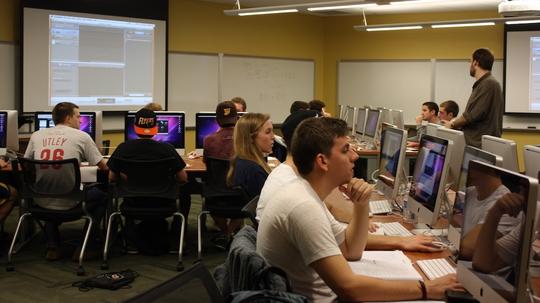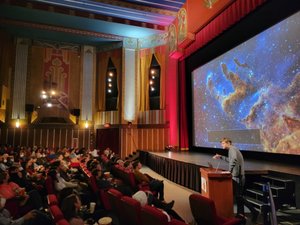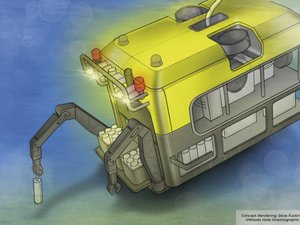
Machine learning and predictive analytics have long been feared and revered – from what we saw in Stanley Kubrick’s 2001: A Space Odyssey to what we experience today, using Siri and Alexa to help manage our daily lives and having Amazon and Netflix suggest what we want before we even know we want it. Across a variety of industries where big data and analytics are used, we see an interesting mix of enthusiasm and caution when it comes to machine learning and its applications.
In the education world, it’s no different. As more and more technology is introduced into today’s classrooms, we are faced with an array of questions: What is the most effective use of technology in the classroom? What is the role of the educator in a technology-enabled environment? Can learning technology really make a difference?
We already have some answers from students and educational institutions that are using machine learning and small data (which is data focused on knowledge acquisition) to improve learning outcomes in ways that are natural to today’s learner and teacher.
Take the story of Julie Hampton, a longtime middle school behavior intervention specialist in rural Washington who decided she wanted to pursue a new career after her children had graduated from high school, grown up and moved out. She decided to go back to school to get a bachelor’s degree in accounting – an option that might not have been possible just a few years ago.
Thanks to the learning technology available today, Julie was able to start school online with WGU Washington while still working full time and without having to relocate or travel huge distances from her rural home. By using digital course materials delivered on her smartphone and computer, Julie could study on the go and at home, engage in course work and with her peers and take exams on her own schedule.
Critically, the machine learning that powers her digital course materials, is a time-saver because it keeps track of what she knows and helps her focus on the concepts she needs to practice the most. It keeps her on the road to success by helping her avoid both boredom and frustration. It also helps instructors have a better sense for where Julie and her classmates stand, enabling them to make adjustments to their teaching accordingly. And, of course, this machine-enabled feedback loop creates more opportunities for the social side of learning – making the time she does spend with her instructors more valuable because they have a deeper understanding of each other.
On the one hand, Julie’s story is not unique. Millions of students take online and blended courses – while pursuing a degree online, or as add-ons to their on-campus experience. These courses open new doors to students, providing more choice, flexibility and access to higher learning. However, we can see from Julie’s experience, online and on-the-ground education augmented with machine learning in pedagogically rich implementations, dramatically increases the positive impact that educational technology can have on teaching and learning.
First, machine learning helps students make the most of their individual study time. Students can learn basics or fundamentals at their own pace and spend more time on areas where they need additional study and practice. The underlying software is constantly updating learning pathways in relation to the student – guiding a student’s progress through the curriculum, based on his or her learning needs.
In addition, machine learning provides educators with clearer insights on how students are progressing, allowing instructors to adjust their lessons and make classroom time more effective. The kind of support machine learning can offer doesn’t replace the interactions between students and their instructors – it strengthens them and allows for more dynamic learning experiences.
Perhaps the biggest promise of machine learning is how it can enhance the overall learning process by addressing the “Two-Sigma Problem,” as described by educational psychologist Benjamin Bloom in the early 80’s.
Bloom observed that when comparing learning outcomes under three different models – conventional classroom, mastery learning and one-to-one tutoring – students who received one-to-one instruction improved their average performance by a 2-sigma gain (or roughly two letter grades); however, he also noted that providing a one-on-one teaching environment for all students was not realistic, hence the “Two-Sigma Problem.”
Under the mastery learning model, where students received ongoing input and advanced only after demonstrating proficiency in a subject, students’ average grades improved by one full letter grade. And therein lies the opportunity to dramatically improve student outcomes.
With machine learning powering thoughtful learning design, the mastery learning model can be replicated – allowing students to receive short, vibrant feedback loops to help them master subjects based on their unique needs – and this can be done at scale.
Looking at education technology today, we have reached a critical inflection point where machine learning technology is being used more widely and has proven to be effective – but the next step is to take these technologies and make them available more broadly. We need to move beyond our apprehensions about machine learning and embrace the promise that they so clearly represent. In Julie’s case, machine learning has prepared her for future success and put her on track to graduate.
Transformative education will always be about educators inspiring students. Machine learning is just a tool – but it’s an invaluable one, and it will reshape learning for the better.








